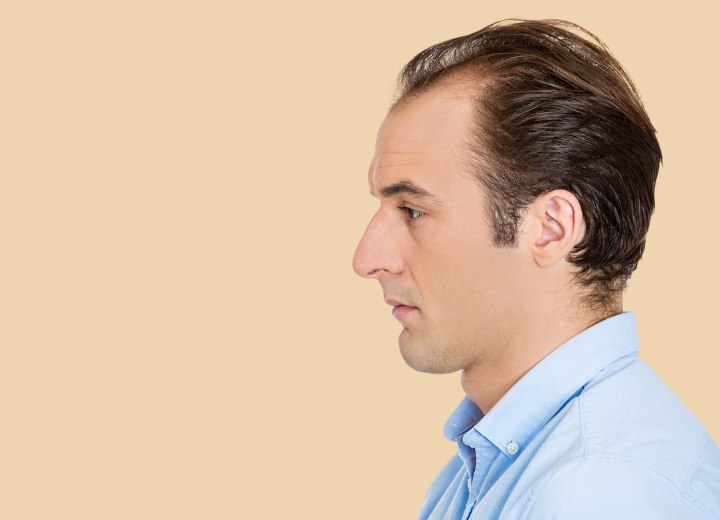Receding Hair Lines

Everyone knows someone who is balding. Some are going bald gracefully, while others are fighting the process tooth and nail (or strand by strand). Some buy wigs and toupees, and others invest in hair replacement surgery. Others still will go for medications to help stop, and in some cases, restore the loss.
We’re not just talking about any hair loss. We’re specifically speaking with what is referred to as “Pattern Baldness”. The medical term is androgenetic alopecia, and it is the most common type of hair loss among men. Alopecia is a term that simply means “hair loss”. It doesn’t signify any specific disease or type of hair loss.
And it’s not just men. Over one-third of men AND WOMEN will experience androgenetic hair loss, though it takes different patterns in the varied genders. For men, it typically begins as a receding of the hair line in front, or a thinning of the hair at the crown of the head; or both. Then as it progresses it may spread further back (or outward) until what remains is a fringe of hair around the sides and back of the head.
In women, the pattern is generally more widespread with the hair in the crown and top sections thinning to a sparseness that leaves the scalp readily visible. While some people have a difficult time understanding that women also have testosterone. It is the balance of these hormones that governs the development of the primary and secondary sexual characteristics, as well as the development and onset of pattern baldness.
When Does It Start?
Most people experience some measure of hair loss by the time they reach the age of forty, although for some people (men especially) the loss can begin much sooner. It is not unheard of for a man to begin losing his hair in his late teens. (I had a school classmate that was fully bald by the age of 25.) The amount of hair loss and the specifics are based solely on genetic predisposition and the balance of the affecting hormones in the body.
For women, the onset of Androgenetic hair loss often coincides with the onset of menopause and the cessation of the woman’s normal cycle. The timing for this can vary as widely as does the onset of menopause itself.
The actual hair loss comes as a result of the hormones in the body causing some of the follicles in the scalp to atrophy and stop producing hair cells.
Is There Treatment?
While pattern baldness is unavoidable, there are treatments that can work to reverse the hair loss and have proven successful for many individuals. These treatments break down into two main categories – surgical and pharmaceutical.
Surgical:
Few people are aware that there are around 5 million hair follicles on the human body, with one million of these being found on the head. Of these one million, about 100 thousand hair follicles constitute the hair of the scalp. When the pattern baldness begins to take effect, many of these follicles begin to atrophy and the hairs are shed leaving thinning areas.
Continue reading ...
